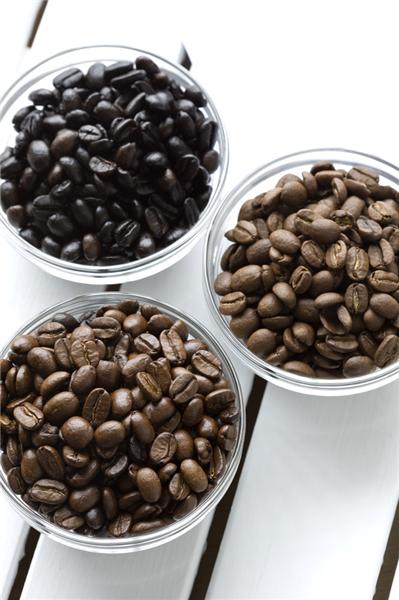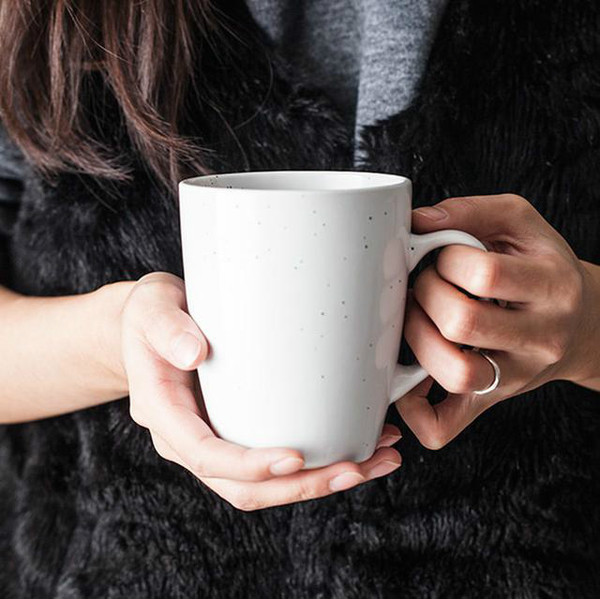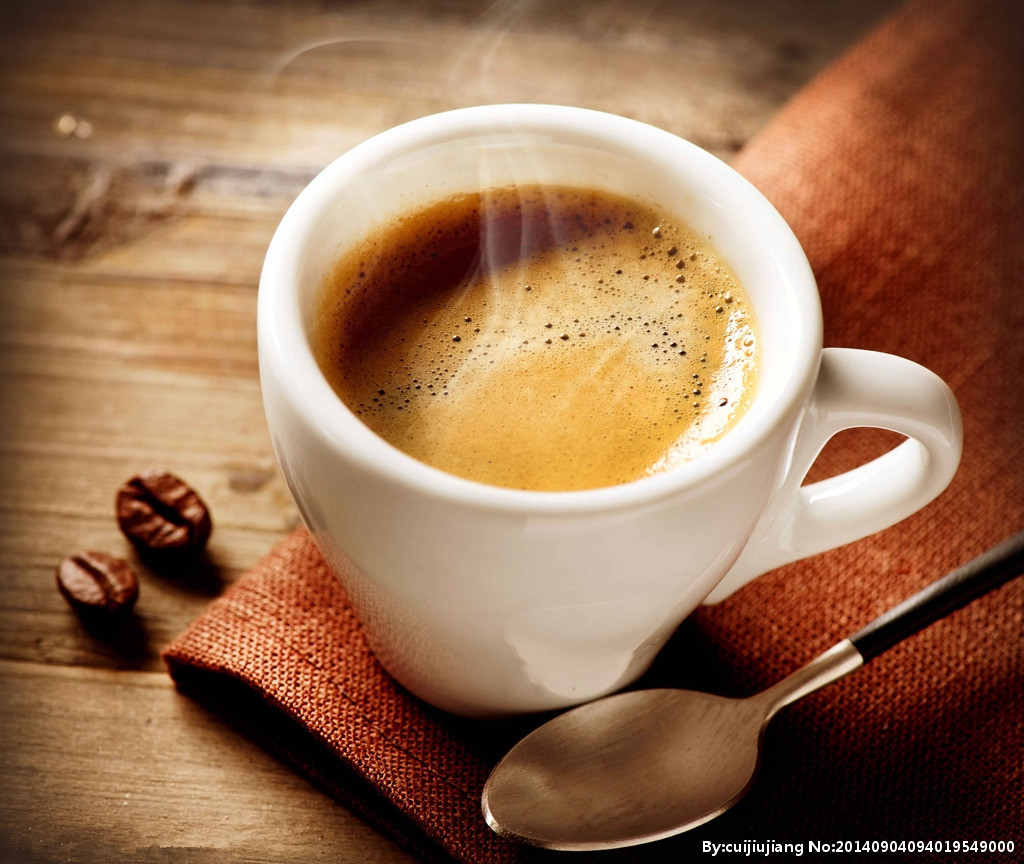What are the ingredients of coffee beans? What are the ingredients of coffee beans? Tannic acid, fat, caffeine
Caffeine: caffeine is the most eye-catching of all the ingredients in coffee. It belongs to a kind of phytoxanthin (animal muscle component). It has the same properties as theobromine contained in cocoa. Green tea contains the same theophylline, and the percentage of reduction after baking is very small. Caffeine has a very extensive effect. It will affect the brain, heart, blood vessels, gastrointestinal tract, muscles and kidneys. The right amount of caffeine will stimulate the cerebral cortex and promote sensory judgment, memory and emotional activity. Make the myocardial function more active, dilate blood vessels and enhance blood circulation, and improve metabolic function. Caffeine can also reduce muscle fatigue and promote digestion (digestion of food) fluid secretion. In addition to this, because it also promotes the kidney function to help the body expel excess sodium ions (chemicals that hinder the metabolism of water molecules), caffeine will not accumulate in the body like other narcotic or excitant substances (narcotic drugs, oil (oil and food) paint solvents, stimulants, etc.) and will be excreted in about two hours. The biggest bitterness of ─ in coffee flavor is caused by caffeine.
Tannin: after extraction, tannin will turn into a yellowish powder, which is easy to blend into water. After boiling, it will decompose and produce pyrosylic acid, which will make the coffee taste worse. If you brew it well and leave it for several hours, the color of the coffee will become stronger than when it was just brewed. And it is also less tasty, so there is the saying that "it is best to drink it as soon as possible."
Fat: the fat contained in coffee plays a very important role in flavor. It is found that there are many kinds of fat in coffee, the most important of which are acidic fat and volatile fat. Acidic fat means that the acid in fat varies with the type of coffee, and volatile fat is the main source of coffee aroma. Once the fat in roasted coffee beans comes into contact with the air, it will change chemically and the taste will get worse.
Protein (protein food): the main source of calorie is protein, and like dripping coffee, most of the protein will not dissolve out, so no matter how much coffee is drunk, the nutrition is limited. That is why coffee will become a sacred food for people who lose weight (weight loss food).

Sugar: without sugar, you will not only feel the bitterness of caffeine and the sour taste of tannin, but also feel sweet, which is caused by the sugar contained in the coffee itself. After baking, most of the sugar will be converted to caramel, bringing a unique brown to the coffee.
Minerals: there are lime, iron (iron food), sulfur, sodium carbonate, phosphorus, chlorine, silicon, etc., because the proportion is very little to affect the flavor of coffee, it only brings a little astringency.
Crude fiber: raw bean fiber will be carbonized after baking, this carbon and sugar caramelization combine with each other to form the tone of coffee, but the fiber turned into powder will have a considerable impact on the flavor of coffee. Therefore, we do not encourage the purchase of powdered coffee beans, because we are unable to taste the flavor of the coffee.
The bitterness of coffee: the color, aroma, and taste of coffee are caused by complex chemical changes that take place during roasting. Therefore, raw beans must go through appropriate chemical procedures to achieve the most balanced state of its essential ingredients in order to be regarded as the best baked beans. The aroma of coffee changes with the heat, so the baking time should be shortened as much as possible, and the heat should be controlled at the lowest temperature that can produce effective chemical composition of coffee beans, that is, the time and heat of the shortest process, so that coffee beans can produce the most suitable composition ratio.
Aroma: aroma is the life of coffee quality, and it can best represent the coffee production process and baking technology, as well as the climate, elevation, variety, refined treatment, harvest, storage, roasting technology of the consuming country, etc. are the conditions that determine the aroma of coffee beans. The results of gas chromatographic analysis showed that the aroma of coffee was composed of acid, alcohol, acetaldehyde, ketone, ester, sulfur compound, phenol, nitrogen compound and nearly hundreds of volatile components. Generally speaking, fat, protein and sugars are important sources of aroma, while lipids blend with the sour and bitter of coffee to form a smooth taste. Therefore, the disappearance of fragrance means that the quality is getting worse, and the relationship between aroma and quality is very close.
The article comes from Abos's Sina blog.
Important Notice :
前街咖啡 FrontStreet Coffee has moved to new addredd:
FrontStreet Coffee Address: 315,Donghua East Road,GuangZhou
Tel:020 38364473
- Prev

Coffee extraction-how to judge a good cup of coffee? What do you mean by extraction rate and coffee concentration?
The taste and extraction methods of coffee are very diverse. The European Fine Coffee Association once put forward the concept of Gold cup. A certain extraction rate and coffee concentration determine the taste of coffee. However, what is the extraction rate, and what is its effect on the taste of coffee?. Here is some knowledge sharing: extraction rate: the ground coffee powder is not completely soluble in water, but really soluble in water.
- Next

A strong-tasting coffee brewed in extremely hot but non-boiling hot water.
Italian coffee is different because it is given a specific meaning in its formation. After-work Italians like to refresh themselves with coffee, but in order to save time, they need a simple and strong cup of coffee, so they have its representative drink Espresso, which means espresso. It is understood that this Italian coffee is not only fragrant and mellow, but also simple.
Related
- Beginners will see the "Coffee pull flower" guide!
- What is the difference between ice blog purified milk and ordinary milk coffee?
- Why is the Philippines the largest producer of crops in Liberia?
- For coffee extraction, should the fine powder be retained?
- How does extracted espresso fill pressed powder? How much strength does it take to press the powder?
- How to make jasmine cold extract coffee? Is the jasmine + latte good?
- Will this little toy really make the coffee taste better? How does Lily Drip affect coffee extraction?
- Will the action of slapping the filter cup also affect coffee extraction?
- What's the difference between powder-to-water ratio and powder-to-liquid ratio?
- What is the Ethiopian local species? What does it have to do with Heirloom native species?

